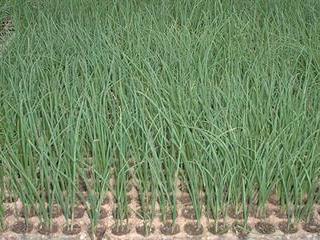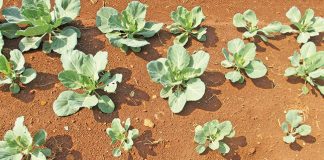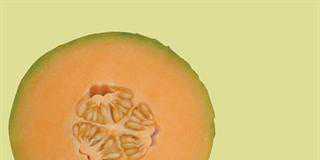
The trick with this method is to sow about three seeds per seedling tray cavity; this will cut down on costs for a crop with a high population density. You can plant the seedling plugs as is, or separate them and transplant individual seedlings.
If you choose the latter option, place four seeds in each cavity to reduce costs further. If you intend transplanting the plugs as is, stick to three seeds per cavity.
When doing so, adjust the spacing so that the target population stays the same per hectare.
You need not worry about clustering the seedlings like this – the individual plants will grow outwards with their leaves moving into the open space to capture the sunlight.
A seedling planter can be used for planting plugs, as it ensures that all the roots remain intact and results in less ‘transplant shock’. It cannot, however, replace direct sowing in the February slot for harvest in autumn as the roots still have to be pruned, and growth rate is slower than with direct sowing, as described in a previous article.
Growing onion seedlings in cavity trays is not as easy as producing seedlings of other vegetables. The weak link is the root system.
Unlike most plants, the onion does not have an adventitious root system and the thickened roots have root hairs near the growth tips to feed the plant. But as they grow through the hole at the bottom of the plug into the air, they are ‘burnt off’. This is called ‘root pruning’.
To counteract this, add an organic substance, ideally cattle manure, to the growing medium. As mentioned in a previous article, adding this to the medium greatly increases root development in the plug.
Several seedling growers have told me that their onion plants appeared nitrogen-deficient compared with other vegetable seedlings, but would not respond to chemical nitrogenous fertiliser.
The reason for this is that there were too few root hairs to take up the fertiliser. Organic content stimulates new root formation, providing a constant new supply of root hairs.
Into the land
Cavity seedling onions are usually suitable for transplanting when they are as thick as a matchstick. Because they are still tender at this stage, you have to harden them if they are going into stressful field conditions – for example, when transplanting from a warm nursery to an environment where frost scorch is likely.
In such cases, move the plants from overhead cover into the open a week or so beforehand to acclimatise them.
When seedbed seedlings are pulled for transplanting, their root system is more exposed and damaged than is the case when plug seedlings are pulled.
They should therefore be allowed to grow into larger seedlings (about pencil thickness) than would be practical for plug seedlings. This will result in more stored energy and they will develop a good root system surprisingly rapidly.
Trimming the leaves
I’m often asked if trimming the leaves of the transplants is advisable. Whether you trim or not makes so little difference to the final yield that it boils down to convenience, such as being able to fit into the containers used to take them to the land.
Bill Kerr is a vegetable specialist and a breeder of a range of vegetables.













